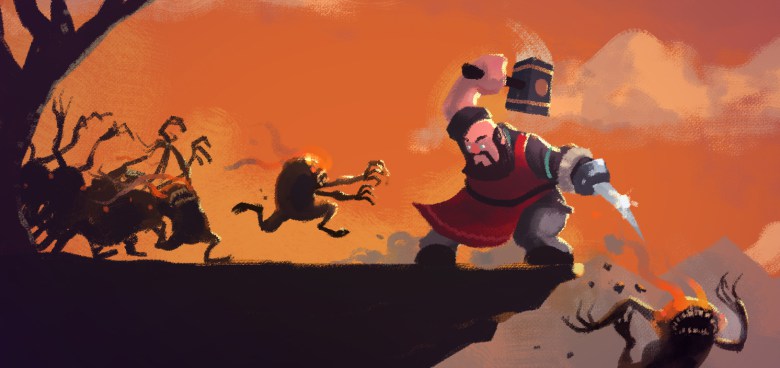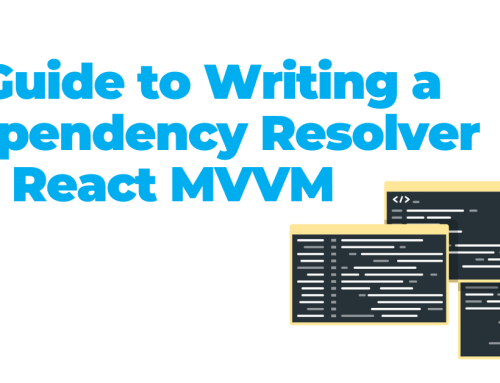Designing a combat system is always something that seems easy in theory, but it gets complicated in practice. There are many causes for this. Starting from the lowest level of individual attacks up, to the high-level aspects of purpose and balancing of all the available tools and enemies. This article deals with some advice, best practices and a list of resources for designing combat system in a real-time action video game.
The Attacks
At the basic level of individual attacks, these are rarely fun after the first implementation. They depend a lot on animations, game-feel and context. And while animations and game feel are always time-consuming and seem like ‘polish’ that should be left for later, their impact on each individual attacks is enormous. You can hardly appreciate how the attacks work without a minimal level of game-feel.
Take a look at the Anatomy of a Successful Attack by Ben Ruiz. It is an example of what can be done for better game-feel on a single sword attack. There are 9 overall effects for that attack, out of which Ben identifies 6 as being absolutely necessary. That takes a lot of time, and it’s easy to get lost working on them. Two possible mistakes you could make are spending too little time on game feel (and have dull and boring attacks) or spending too much time on it (and lose sight of the bigger picture).
The Moveset
Doing individual attacks in separation can lead to some nice-feeling results after a while. But not looking at a higher level can lead to repetitive and uninteresting combat after the excitement of the visual effects wears off. The individual attacks need to be part of a complete system and they should complement each other in practice. Each one should be a tool with a specific purpose that properly belongs in the tool belt. And the tool belt needs to fit the game. Just as the tools of a plumber are different from the tools of an electrician, the tools in the game need to support the character and essence of the game. The mistake you want to avoid is just putting together lots of attack options simply because they are present in other games, without thinking of their purpose and if they are needed at all.
The Opponents
Besides having a complete tool belt, you need to have obstacles that require using those tools both individually and in combination. Enemy design is another aspect of a combat system. A mistake that is very easy to make in this area is just pulling in enemy mechanics and designs from lots of other games (everyone loves variety, right?) without seeing how they fit together, what they ask of the player, and how can the player use his tools against them. It’s so easy to find lists of enemies and bosses in different games. But it’s similarly easy to think you need all of them or to limit yourself to what you see in those lists.
The List
In my research I found a scarcity of places from where to learn all this. So I put together a list of resources and articles we studied while designing the combat system for Yaga. The usefulness of each of these will vary from game to game and from reader to reader. Keep in mind the 80/20 rule: 20% or less of the articles in this list will give you 80% or more of the total value you get from reading them. Skim them, see what works best for you, and dive deep in those. And since it’s easier to be subjective, I’ll start with those that belong to my own 20 percent.
Mike Stout (Ratchet and Clank, Skylanders) has a great talk available for free online at the GDC Vault called “Reaching into the Toy-Chest“. Additionally, he wrote a series of articles on game and combat design focusing on a methodology he calls Trinity ( Part 1 through Part 9). These together were a huge help in getting me to think better about the player’s toolbox and how to design enemies. The combat design is framed as the game asking questions to the player (enemy behaviors), giving him the tools to answer them (player’s attacks) and changing the questions slightly in each instance of the combat (level design, enemy combinations). All while keeping everything neatly organized in archetypes, dimensions and choices fields.
Sébastien Lambottin (Assassin’s Creed, Spiderman, Alone in the Dark) covers The Fundamental Pillars of a Combat System in his article on Gamasutra. The same approach of designing in terms of complementary tools and enemies that support those tools is seen here. Plus, he goes into more details on risk vs reward of using each player ability and designing complex enemies. On his blog he goes into more details on some topics like interesting enemies, groups of enemies and a few prototypes related to combat design.
As I said, the articles from these two designers brought me the most value (probably because this was the area where I was most lacking). They really gave me a huge boost in learning what to think about and how to approach designing combat.
The rest of the list, grouped by category:
Enemy Design
- How To Design Enemies, by Mike Birkhead, only available through the Waybackmachine.
- Writing this list, I found Mike’s blog, with a few other articles I plan to read next week. Don’t know how I missed these earlier.
- Enemy Design and AI, by Bart Vossen
- Enemy Attacks and Telegraphing + Post Attack Vulnerability, by Mike Stout
- Enemy Design in Link to the Past, by Nathan Savant (yes, it’s a list… didn’t say they’re not useful, just don’t use them as recipes)
- What we can learn from Doom, by Mark Brown
- Boss Battle Design and Structure, by Mike Stout (yes, him again… call me a fanboy if you must)
Level and Encounter Design
- Designing Combat Encounters in Uncharted 2, by Benson Russel
- A Beginner’s Guide to Designing Video Game Levels, by Mike Stout
- Level design for melee combat systems, by Bart Vossen
- Incorporating level design in Melee combat systems, by Bart Vossen
- Creating Satisfying Combat Experiences, by Joel Goodsell
- The Art of War: Gears of War, by Zi Peters
- Anatomy of a Combat Zone, By Josh Bridge
Misc articles that don’t quite fit the other categories
- 7 combat systems that every game designer should study, by Bo Moore
- Controlling Chaos Designing Compelling Combat in Action Games, by Adam Bormann
- Combat Design, by Mark Acero
- How combos in Kingdom of Amalur work, gamefaqs thread. Also this. Not an article, but a good inspiration if you want to design a combo system
- Aiding Asymmetrical Balance with Frame Data, by Matthew DeLucs
- UFGTX: How to Make Fighting Games, by Mike Zaimont
- Animation in Action Games, by Turbo Button
- Depth vs Breadth in Combat Design, by Mike Birkhead (Apparently, i did reach Mike’s blog in the past, just missed some of his articles)
- Frame by Frame: The Sword’s Basics, by Ben Ruiz
- Combat Analysis, by Ben Ruiz. A set of articles looking at combat design in various games.
- Assassin’s Creed Combat System, by Alex Mandryka
- Fibonacci game design, by Mike Birkhead (oh come on! So, apparently, I found some of his articles in other places, and didn’t know they had the same author)
- A discussion on reddit about types of enemies
Pfew, that was a long post. Hopefully you’ll find reading these useful, or at least remember that there’s a place on the internet having this list in case you need it later.
Article written by The Breadcrumbs Team




